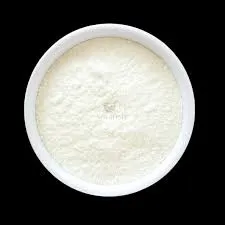
Nov . 12, 2024 04:25 Back to list
hydroxyethylcellulose price
The Price Dynamics of Hydroxyethylcellulose An Overview
Hydroxyethylcellulose (HEC) is a non-ionic, water-soluble polymer derived from cellulose, widely utilized in various industries due to its versatile properties. It is particularly praised for its thickening, gelling, and emulsifying capabilities, making it an essential ingredient in cosmetics, pharmaceuticals, food products, and construction materials. Given its significant applications, exploring the price dynamics of hydroxyethylcellulose offers crucial insights for businesses and consumers alike.
Market Overview
The price of hydroxyethylcellulose is influenced by several factors, including raw material availability, production costs, and market demand. The primary feedstock for HEC production is cellulose, which is derived from wood pulp or cotton. Fluctuations in the supply of these raw materials can significantly impact the overall cost of HEC. For instance, if there are supply chain disruptions or increased demand for cellulose due to other industries, the prices of HEC are likely to rise.
Moreover, the production processes involved in HEC synthesis require energy and specific chemicals, such as ethylene oxide, leading to additional cost factors. Variations in energy prices and chemical costs directly affect the pricing of hydroxyethylcellulose. As the world pivots toward sustainability, many manufacturers are adopting greener practices, which may also influence production costs and, consequently, the final price of HEC.
Regional Pricing Variations
Hydroxyethylcellulose prices are not uniform globally and can vary significantly based on geographical region. In North America and Europe, for instance, the price tends to be higher due to stringent regulatory frameworks and advanced manufacturing technologies. These regions often produce HEC of higher purity and quality, which commands a premium price in the market.
Conversely, countries in Asia, especially China, have emerged as significant players in the HEC market due to lower production costs and increasing industrial capabilities. The availability of cheaper raw materials and labor in these regions often results in more competitive pricing. Consequently, businesses looking to source HEC may find cost advantages by importing from Asia, although they must also consider potential quality trade-offs.
hydroxyethylcellulose price

Demand Factors
The demand for hydroxyethylcellulose has seen a steady increase in recent years, driven by its expanding applications across several industries. In the cosmetic and personal care sector, HEC is utilized in products like shampoos, lotions, and creams for its thickening and stabilizing properties. The rising consumer preference for high-quality personal care products often leads to higher demand for HEC, driving prices upward.
In the pharmaceutical industry, HEC serves as a crucial agent in drug formulation and delivery systems. As the global healthcare market grows, particularly in the wake of the COVID-19 pandemic, the demand for reliable excipients like HEC is projected to increase, further contributing to price fluctuations.
Additionally, the construction sector relies on hydroxyethylcellulose as a thickener in cement and tile adhesives. The growth in infrastructure development, especially in emerging economies, is expected to bolster the demand for HEC, thus influencing its price trajectory.
Conclusion
The price of hydroxyethylcellulose is subject to various internal and external factors, including raw material availability, production costs, and shifting market demands. As industries continue to innovate and expand their applications of HEC, understanding these dynamics becomes essential for stakeholders.
For manufacturers and suppliers, maintaining a keen awareness of market trends and regional pricing will be critical in positioning themselves strategically. Meanwhile, consumers and businesses utilizing hydroxyethylcellulose must consider both price and quality in their procurement strategies to ensure they meet the evolving demands of their respective markets.
As we move forward, the hydroxyethylcellulose market will likely remain dynamic, reflecting broader economic trends and industry innovations. Understanding these nuances will be key to navigating the future landscape of this important polymer.
-
Versatile Hpmc Uses in Different Industries
NewsJun.19,2025
-
Redispersible Powder's Role in Enhancing Durability of Construction Products
NewsJun.19,2025
-
Hydroxyethyl Cellulose Applications Driving Green Industrial Processes
NewsJun.19,2025
-
Exploring Different Redispersible Polymer Powder
NewsJun.19,2025
-
Choosing the Right Mortar Bonding Agent
NewsJun.19,2025
-
Applications and Significance of China Hpmc in Modern Industries
NewsJun.19,2025







